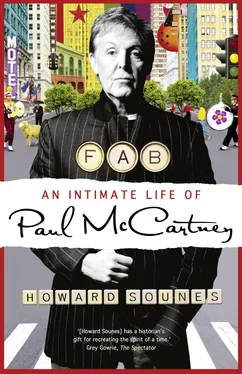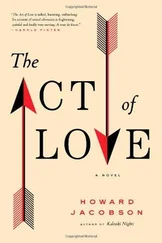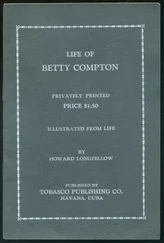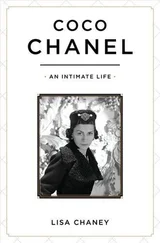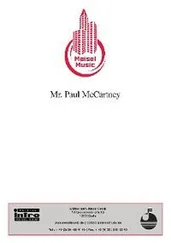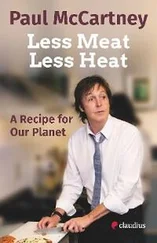JAMES PAUL McCARTNEY
Although the Luftwaffe had ceased its bombing raids on Liverpool by the time he was born, on Thursday 18 June 1942, James Paul McCartney, best known by his middle name, was very much a war baby. As Paul began to mewl and bawl, the newspapers carried daily reports of the world war: the British army was virtually surrounded by German troops at Tobruk in North Africa; the US Navy had just won the Battle of Midway; the Germans were pushing deep into Russian territory on the Eastern Front; while at home Prime Minister Winston Churchill’s government was considering adding coal to the long list of items only available on ration. Although the Blitz had passed for Liverpool, the war had three years to run, with much suffering and deprivation for the nation.
As his parents were married in a Catholic church, Paul was baptised into the Catholic faith at St Philomena’s Church, on 12 July 1942, the day the Orange Order marches. Though this may have been coincidental, one wonders whether Mary McCartney and her priest, Father Kelly, chose this day to baptise the son of a Protestant by way of claiming a soul for Rome. In any event, like his father, Paul would grow up to have a vague, non-denominational faith, attending church rarely. Two years later a second son was born, Michael, Paul’s only sibling. The boys were typical brothers, close but also rubbing each other up the wrong way at times.
Paul was three and Mike one when the war ended. Dad resumed his job at the cotton exchange, though, unusually, it was Mum’s work that was more important to the family. The 1945 General Election brought in the reforming Labour administration of Clement Attlee, whose government implemented the National Health Service (NHS). Mary McCartney was the NHS in action, a relatively well-paid, state-trained midwife who worked from home delivering babies for her neighbours. The family moved frequently around Merseyside, living at various times in Anfield, Everton, West Derby and over the water on the Wirral (a peninsula between Liverpool and North Wales). Sometimes they rented rooms, other times they lodged with relatives. In 1946, Mary was asked to take up duties on a new housing estate at Speke, south of the city, and so the McCartneys came to 72 Western Avenue, what four-year-old Paul came to think of as his first proper home.
Liverpool had long had a housing problem, a significant proportion of the population living in slums into the 1950s. In addition to this historic problem, thousands had been made homeless by bombing. In the aftermath of the war many Liverpool families were accommodated temporarily in pre-fabricated cottages on the outskirts of the city while Liverpool Corporation built large new estates of corporation-owned properties which were rented to local people. Much of this construction was undertaken at Speke, a flat, semi-rural area between Liverpool and its small, outlying airport, with huge industrial estates built simultaneously to create what was essentially a new town. The McCartneys were given a new, three-bedroom corpy house on a boulevard that leads today to Liverpool John Lennon Airport. In the late 1940s this was a model estate of new ‘homes fit for heroes’. Because the local primary school was oversubscribed, Paul, along with many children, was bussed to Joseph Williams Primary in nearby Childwall. Former pupils dimly recall a friendly, fat-faced lad with a lively sense of humour. A class photo shows Paul neatly dressed, apparently happy and confident, and indeed these were halcyon days for young McCartney, whose new suburban home gave him access to woods and meadows where he went exploring with the Observer Book of Birds and a supply of jam butties, happy adventures recalled in a Beatles’ song, ‘Mother Nature’s Son’.
In the evening, Mum cooked while Dad smoked his pipe, read the newspaper or did the garden, dispensing wisdom and jokes to the boys as he went. There were games with brother Mike, and the fun of BBC radio dramas and comedy shows. Wanting to spend more time with her sons, Mary resigned from her job as a midwife in 1950, consequently losing tenure of 72 Western Avenue. The family moved one mile to 12 Ardwick Road, a slightly less salubrious address in a part of the estate not yet finished. On the plus side the new house was opposite a playing field with swings. Resourceful Mary got a job as a health visitor, using the box room as her study. One of Jim’s little home improvements was to fix their house number to a wooden plaque next to the front doorbell. When Paul came by decades later with his own son, James, he was surprised and pleased to see the number still in place. The current tenant welcomed the McCartneys back, but complained to Paul about being pestered by Beatles fans who visited her house regularly as part of what has become a Beatles pilgrimage to Liverpool, taking pictures through the front window and clippings from her privet hedge. Paul jokingly asked, with a wink to James, whether she didn’t feel privileged.
‘No,’ the owner told him firmly. ‘I’ve had enough!’
Her ordeal is evidence of the fact that, alongside that of Elvis Presley, the Beatles are now the object of the most obsessive cult in popular music.
THE BLACK SHEEP
As we have seen, the McCartneys were a large, close-knit family who revelled in their own company, getting together regularly for parties. Jim would typically greet his nearest and dearest with a firm handshake, a whimsical smile, and one of his gnomic expressions. ‘Put it there,’ he’d say, squeezing your hand, ‘if it weighs a ton.’ What this meant was not entirely clear, but it conveyed the sense that Jim was a stalwart fellow. And if the person being greeted was small, they would often take their hand away to find Jim had slipped a coin into their palm. Jim was generous. He was also honest, as the McCartneys generally were. They were not scallies (rough or crooked Scousers), until it came to Uncle Will.
Considering how long Paul McCartney has been famous, and how closely his life has been studied, it is surprising that the scandalous story of the black sheep of the McCartney family has remained untold until now. Here it is. In 1924 Paul’s aunt Edie, Dad’s sister, married a ship steward named Alexander William Stapleton, known to everybody as Will. Edie and Will took over Florence McCartney’s corporation house in Scargreen Avenue after she died, and Paul saw his Uncle Will regularly at family gatherings. Everybody knew Will was ‘a bent little devil’, in the words of one relative. Will was notorious for pinching bottles from family parties, and for larger acts of larceny. He routinely stole from the ships he worked on. On one memorable occasion Will sent word to Edie that she and Ginny were to meet him at the Liverpool docks when his ship came in. Gin wondered why her brother-in-law required her presence as well as that of his wife. She found out when Will greeted her over the fence. As Ginny told the tale, Will kissed her unexpectedly on the lips, slipping a smuggled diamond ring into her mouth with his tongue as he did so. That wasn’t all. When he cleared customs, Will gave his wife a laundry bag concealing new silk underwear for her, while he presented Ginny with a sock containing – so the story goes – a chloroformed parrot.
Will boasted that one day he would pull off a scam that would set him up for life. This became a McCartney family joke. Jack McCartney was wont to stop ‘relies’ he met in town and whisper: ‘I see Will Stapleton’s back from his voyage.’
‘Is he?’ the relative would ask, leaning forward to hear Jack’s wheezy voice.
‘Yes, I’ve just seen the Mauretania * * One of the largest ships in the world. † Unless indicated, sterling/dollar exchange values are as of the time of writing. * It is sometimes said that Harrison was born on 24 February 1943, but his birth and his death certificate clearly state his birthday as the 25th.
halfway up Dale Street.’ Joking aside, Will did pull off a colossal caper, one sensational enough to make the front page of the Liverpool Evening News , even The Times of London, to the family’s enduring embarrassment.
Читать дальше
